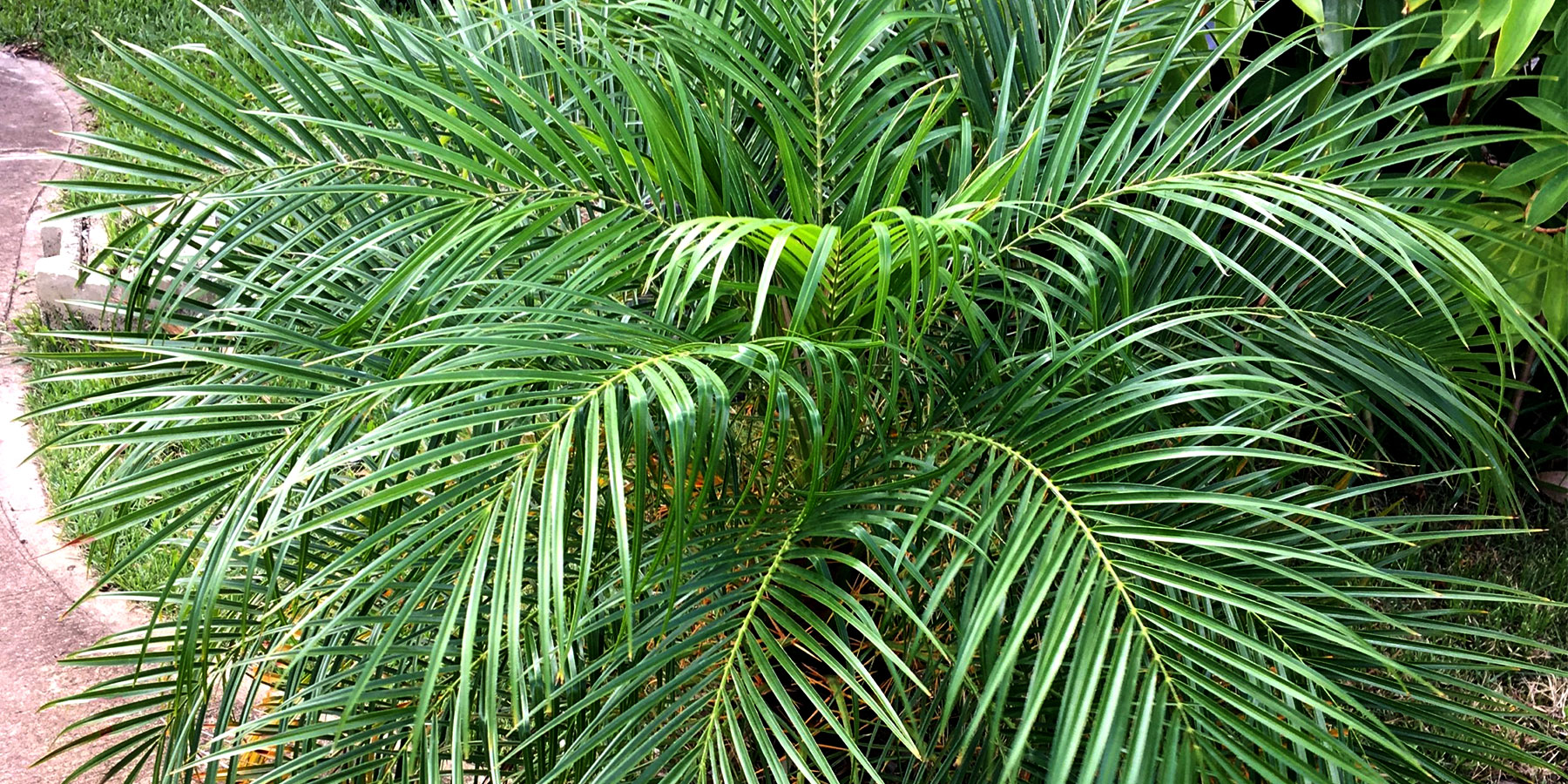How To Care For A Pygmy Date Palm In A Pot
When caring for a Pygmy date palm in a pot there are only three things you need to do. Just three simple things!
1)Avoid pruning unless necessary
2)Fertilize one to four times a year
3)Don’t over water
Avoid Pruning Your Pygmy Date Palm Unless Necessary
Don’t prune unless necessary! Prune no leaves (technically fronds) ever, because palms will drop what they do not need. If you dislike the appearance, wait until fronds are brown and drooping before removing. You should only remove green fronds if they are a hazard to people or property (in a walkway or rubbing the roof). If you must, only prune in May or August.
Also don’t “skin” the palm. Leave frond stubs on the trunk; they help protect it from insects and sun. Do not use a saw to shape the trunks of palms. Let the palms shape themselves. They will do it correctly for their species.
Palm trunks develop their own beauty when not “skinned” by power tools.
Why You Need To Avoid Pruning
Palms aren’t “trees.” Palms are upright, tall, semi-woody, long-lived, perennial plants. A palm is like a giant onion plant that gets woody as time passes. For the palm to get properly woody, and strongly so, it needs all its fronds – and needs these fronds to turn brown all the way to the trunk. If removed too soon, you get weak trunks.
Palms are very thrifty. Palms take minerals, proteins and necessary chemicals out of old fronds and ship them to the new fronds. By cutting off green fronds, you force the plant to start over from scratch. This stresses and weakens the palm.
We live in the Southwest, where the summer sun can be blazing hot. Just as humans need some shade to keep from dehydrating, so do most plants. Palms make their own shade! Those older fronds bend downward and keep the trunk shaded and cool.
Pruning causes stress – and stressed palms are more likely to become infested by insects. Particularly deadly is the giant palm-borer. This insect starts on the succulent young leaves and works its way to the sugar-rich heart of the palm, killing it. It can take up to nine years for borers to kill larger palms. Adult palm borers are most active in June and July, and can find freshly pruned palms to lay eggs in from at least 3 kilometers away. This is why you should avoid pruning in June and July.
Fertilize Your Pygmy Date Palm Occasionally
Fertilize your palms one to four times per year. The best time is during active summer growth, so May, June, July and August. Use a general purpose or lawn-type fertilizer at half-strength. Mix with water and pour all around the palm, several feet away from the trunk if planted in the ground, where the feeder roots are. Water deeply in this same area. Soak the soil to carry the fertilizer down to the root zone. Palm roots are often 6 to 8 feet deep.
Don’t Over Water You Pygmy Date Palm
Most Pygmy palms grown in a pot do best with dryer soil. Soak the plant but allow it to dry out between times. Soak three to four times during the summer months to encourage healthy growth. When in doubt, soak on these dates unless you get a good monsoon rain: May 15, June 15, July 15, August 15, September 15. Notice – water is almost the same dates as the fertilizer. Makes it easy to remember. Just avoid fertilizing in September. Do not encourage new growth with fertilizer in September as palms enter their dormant winter phase.
As you can see, growing and caring for a Pygmy date palm in a pot can be easy as long as you remember these three simple tips. Happy Gardening!







